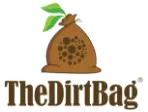

As the summer sun sets, your garden may want some extra food to remain colorful and productive. Late summer fertilization can offer the nutrients plants require to thrive as they enter the cooler months. Here's a detailed guide to assessing whether your garden requires a late-summer feed, understanding nitrogen requirements, selecting and applying fertilizers responsibly, the benefits of compost, and identifying signs of over or under-fertilization.

To determine whether your garden requires more fertilizing in late summer, check your plants' present health and growth. Look for fading leaves, reduced development, or a lack of flowering and fruiting. These symptoms frequently signal vitamin deficits, which can be corrected with a timely feed.
However, not every plant needs a late-summer boost. Perennials and established shrubs, for example, may already have adequate nutrients stored in their root systems. Annuals and vegetables, on the other hand, might substantially benefit from a late-season fertilizer application to help them reach their peak growth before October.
Plants often demand a different soil nutritional balance in late summer than they do in the spring and early summer. Nitrogen, which stimulates green development, is now less important than phosphate and potassium. Phosphorus promotes root growth and flower output, whereas potassium improves general plant health, disease resistance, and stress tolerance.
A soil test can provide vital information about your garden's specific nutrient requirements. This easy test assesses the levels of critical nutrients and allows you to modify your fertilization approach accordingly.
Choosing the right fertilizer for late summer entails selecting a product with an appropriate nutrient balance. Look for fertilizers labeled "bloom boosters" or with a greater phosphorus and potassium ratio than nitrogen. Organic alternatives, such as bone meal and rock phosphate, release nutrients gradually and are eco-friendly.
When applying fertilizer, follow these best practices:
Compost is a gardener's best friend, particularly in the late summer. Compost is high in organic matter, which improves soil structure, moisture retention, and provides a slow-release source of nutrients. Unlike synthetic fertilizers, compost enriches the soil with helpful microorganisms that help plants grow.
To use compost efficiently, put a 2-3 inch layer around the base of your plants, taking care not to pile it against stems or trunks. Using a rake or hand tool, gently push the compost into the soil's top layer. Over time, the compost will decompose and interact with the soil, gradually releasing nutrients to your plants.
Recognizing the indicators of over or under-fertilization is critical for keeping a healthy garden. Over-fertilization can result in leaf burn, where the edges of the leaves turn brown and crispy, as well as profuse foliage growth with few blooms or fruits. In contrast, under-fertilized plants sometimes have fading leaves, limited development, and poor flowering or fruiting.
Monitoring your plants on a regular basis and changing your fertilization tactics based on their responses will help you attain the proper balance. Always err on the side of caution, as adding more fertilizer later is easier than repairing the damage caused by over-application.
You can ensure that your garden obtains the nutrients it requires to thrive throughout the late summer and fall. Proper fertilization not only promotes plant growth and productivity, but also prepares your garden for the next seasons, ensuring its beauty and fullness. Contact The Dirt Bag for tips, ideas, and the best garden products.